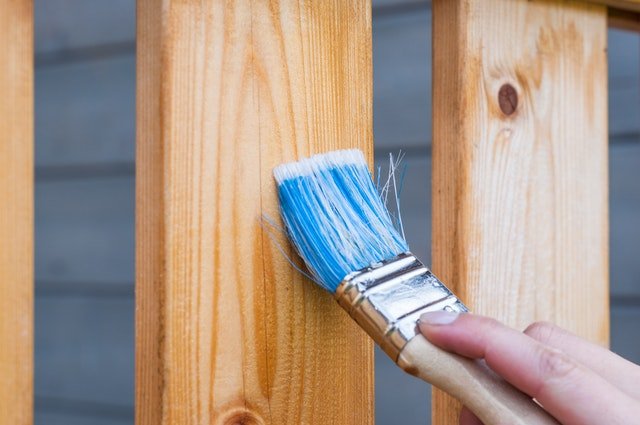A wood privacy, split rail or picket fence can add to your home’s beauty and security. These fences typically last about 15 years, but with proper maintenance you can extend the life of your wood fence to 20 years or more.
New Fence Considerations
The first consideration is the type of wood. Western red cedar and redwood are commonly used for fences because they resist decay and rot, but there are a variety of other wood types available. In Kansas, cedar is most common because of the extreme weather.
Next, fence posts should always be pressure-treated because they have contact with the ground. This exposure to moisture and insects will cause the wood to rot faster if it is not treated. The pickets, or vertical boards of the fence, don’t need to be pressure-treated because they’re above the ground. Pressure-treated lumber is infused with chemicals that help keep water and bugs from damaging the wood.
Lastly, when you have a new wood fence installed, wait about a year before staining or painting it. This allows time for the wood and chemicals used for pressure treating it to dry out. If the fence isn’t dry, you’ll just end up sealing moisture in, which can lead to rot and decay. Pressure-treated wood is protected from fungal decay and termites, but it’s still subject to swelling, shrinking, cracking and warping, so it’s important to perform some basic maintenance on your fence every two or three years.
Inspect and Repair Each Year
Once a year, take a walk around your yard and inspect your fence for signs of damage or rot. Replace broken boards, hammer in loose nails or tighten screws. Check each section of the fence to make sure it’s securely attached to the next one. If any sections of the fence are leaning, make sure the posts are seated firmly in the ground. You may need to replace the posts if they’re in poor condition. Check the hinges and locks on your gates to make sure they’re secure and lined up properly. You can lubricate them with automotive grease if needed.
If you find any splits, cracks or chips in the wood, use a waterproof wood glue to seal the damage. This will prevent moisture from causing further deterioration.
Pressure-treated lumber isn’t completely resistant to water intrusion, so any steps you take to minimize its exposure to moisture will help prolong the life of the wood. Adjust sprinklers so they don’t get the fence wet and cause the wood to rot or lead to the growth of moss. Trim back bushes and vines so they don’t hang on the fence, because they add weight and hold on to moisture.
Make sure the area around the fence has proper drainage so water doesn’t pool around the posts. The soil at the base of each post should be firmly packed, and have a slight slope away from the fence.
Clean Every 3 – 5 Years
Every two to three years, clean the wood to remove dirt, moss, mildew and graying. Then, recoat with a UV inhibiting, water-repellent coating. After making repairs, scrape off any moss or loose, peeling paint until you can see new wood, and clean the fence with a pressure washer.
If you notice mold on the fence, you can mix a solution of 20% bleach to 80% mild detergent and spray it on the fence an hour before washing it. This will help kill any mold spores and help prevent them from growing back.
Reseal or Paint After Cleaning
Paint or stain should be reapplied every 3-5 years, if not sooner. Use exterior oil-based stain or latex paint, which will seal out moisture, prevent wood rot, limit the amount of weathering and extend the life of the wood. Choose a stain or sealant with a UV inhibitor to help keep the wood from turning gray. Let the wood dry for about a week before applying a stain or sealant. You can use a brush or a power sprayer with a tip that’s main for stain, which is thinner than paint.

